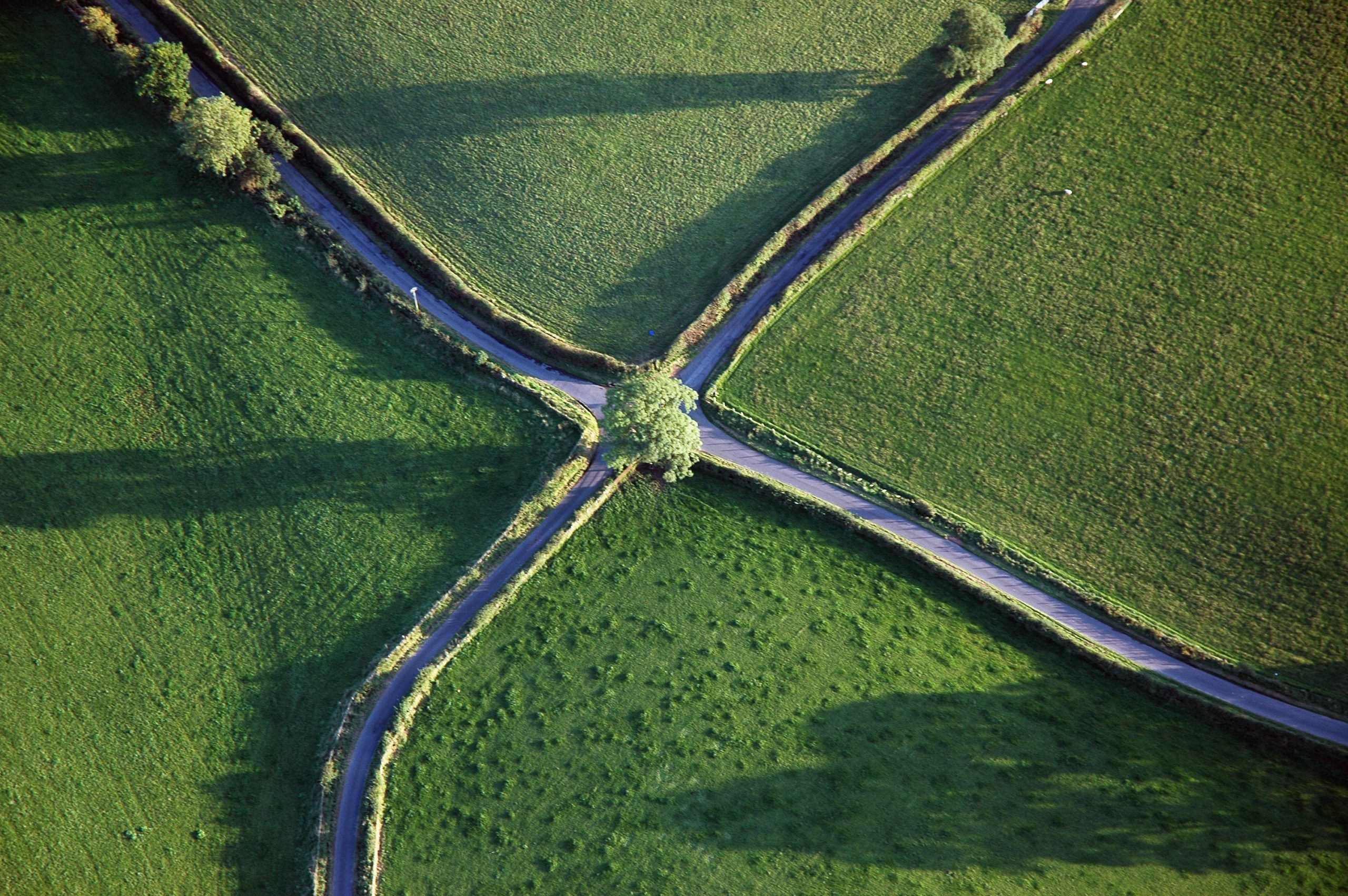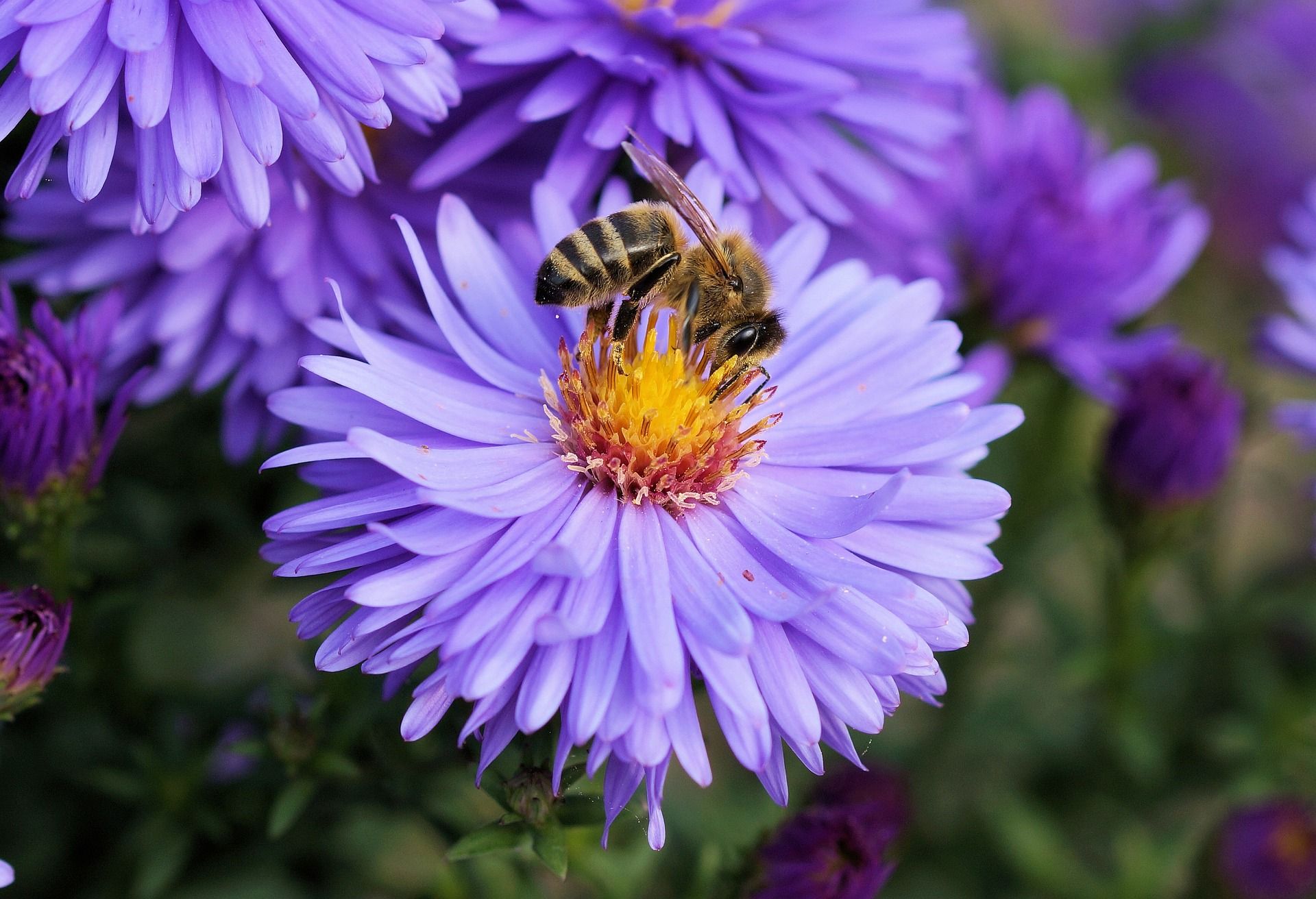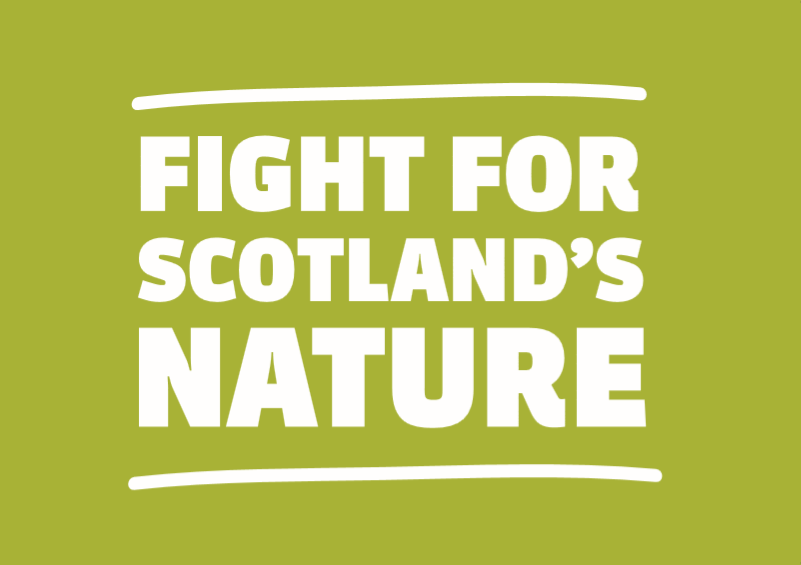March 12th, 2019 by ie-admin

Environmental protections have been referenced a lot in the context of Brexit. And with good reason: overall, joint action across the EU has been a good thing, enabling us to tackle environmental issues such as pollution and climate change in a coordinated way across 28 different countries. Environmental policy has been an EU competence for decades with the first EU – European Economic Community back then – environmental piece of legislation to protect wild birds adopted in 1979. This was 40 years ago.
As such the prospect of EU exit poses a number of significant risks for our environment and our ability to hold governments to account when it comes to enforcing important legislation, from air quality and climate change to the protection of our species and habitats.
While many ENGOs suggested ahead of the 2016 referendum vote that on the basis of environmental grounds, it would be safer for the UK to remain in the EU, since then ENGOs in Scotland and across the UK have been trying to find ways to ensure our environment does not suffer as a result of Brexit, if and when this happens.
Under any Brexit deal, it is commonly acknowledged that governments across the UK would need to agree on additional measures to safeguard our environment. Indeed, even with a deal the timeframes are tight: if a deal similar to the one being negotiated by the UK Prime Minister and the EU comes to pass, this allows for a transition of up to two years which unless extended would mean the UK and Scotland would need to ensure effective environmental protection and governance mechanisms are in place as of January 2021. So, already there is little time to put together firm legislative and policy proposals to make that happen.
Important proposals have been put forward, particularly the prospect of legislation to replicate important protections, such as the introduction of a Scottish Environment Act as supported by the joint Scottish Environment LINK campaign Fight for Scotland’s Nature. This would see important EU and international environmental principles embedded in Scots law, the creation of an independent watchdog to ensure legislation is implemented and enforced, and ambitious future targets for environmental protection.
But all this does not mitigate against the very real, very imminent and very considerable risks of a No Deal Brexit on 29 March.
Greener UK, a coalition of 14 major environmental organisations, issued a stark warning in its recent update of the UK Environment Risk Tracker. The verdict for all policy areas investigated is one of high risk and Greener UK cautions that “leaving without a deal poses potentially dire consequences for the environment, in the short and longer term”.
This applies to Scotland’s environment, as well.
1. A No Deal Brexit means that the full spectrum of existing environmental protections will not be fully operational on 29 March
The prospect of EU exit led to the need for existing EU laws to be transposed to domestic law in a way that ensures that this legislation can operate post-Brexit. This has led to civil servants in the UK and Scottish Governments reviewing each piece of EU legislation, including environmental legislation, to amend it so it can continue to function as of 29 March.
This arduous process will not be finished by the end of March. Indeed, even for legislation that has already gone through this process, it is anticipated that a further review will be needed to catch any errors. This was to be expected given the enormity of the task and the resources required to support it. But the risk of a No Deal means that the UK Government commitment to have a fully functioning statute book by exit day will not be met.
In addition, environmental NGOs including members of Scottish Environment LINK have expressed concerns about whether the way that EU law is being transposed in domestic law fully retains the spectrum of environmental protections we currently enjoy. This is partly because this process is not replicating the important EU governance mechanisms which ensure that legislation is effectively implemented, as explained below.
2. A No Deal Brexit means Scotland will not have access to EU enforcement mechanisms
A No Deal Brexit means Scotland will no longer be able to have recourse to important EU mechanisms which ensured that environmental legislation was effectively monitored, reported on and enforced.
Of particular concern are the key functions of the European Commission and European Court of Justice in terms of investigating and addressing cases where environmental law was not enforced. The European Commission’s complaints procedure has led to positive results of our environment. It is therefore key that these functions are replicated, if and when Brexit happens.
To address this, Scottish Environment LINK members have called for the creation of an independent and well-resourced watchdog. However, the Scottish Government launched a consultation on this matter only in mid-February and will not have begun serious deliberations on solutions to this issue before mid-May.
What is more, the Scottish Government has not publicised any views about the measures it will take under a No Deal scenario. In other words, there is no publicly available information that provides reassurances about what interim measures the Government is proposing to take forward in the case of No Deal.
This means that on 29 March, in practice, legislation for the environment in Scotland may not only be incomplete, but it will also be less enforceable compared to today.
3. A No Deal Brexit means Scotland’s environment will lose access to EU environmental principles
While the Scottish Government is proposing a duty for Ministers to have regard to the EU’s environmental principles, this will not be in legislation before 29 March. This is because this proposal is being consulted on at the moment, alongside the potential governance concerns and solutions highlighted earlier.
In 2017, Environment Secretary Roseanna Cunningham stated that “the four EU principles of precaution, prevention, pollution at source and ‘polluter pays’… are essential to maintaining Scotland’s environmental achievements”. As part of the EU, Scotland’s courts, businesses and governments have been able to apply the four EU environmental principle in their decision-making. They have formed an essential component of environmental law and underpin most of our environmental legislation.
Under a No Deal Brexit, we will lose the overarching framework for policy-development provided by the EU and underpinned by these principles. Even more worryingly, in that scenario we will have nothing similar to fall back to. Scotland, in contrast to countries such as Wales, France or Switzerland, has not embedded environmental principles in domestic law.
So, while it is comforting that the Scottish Parliament has already voted against a No Deal, it is the ‘meaningful vote’ taking place in the House of Commons that will determine whether a No Deal Brexit is really taken off the table.
Environmental charities from across the UK strongly believe that a No Deal Brexit needs to be averted at all costs. If Brexit is to go ahead, this cannot come at a cost to our environment. We simply cannot afford to unpick environmental protections at a time of global ecological crisis.
March 12th, 2019 by ie-admin
Environmental protections have been referenced a lot in the context of Brexit. And with good reason: overall, joint action across the EU has been a good thing, enabling us to tackle environmental issues such as pollution and climate change in a coordinated way across 28 different countries. Environmental policy has been an EU competence for decades with the first EU – European Economic Community back then – environmental piece of legislation to protect wild birds adopted in 1979. This was 40 years ago.
As such the prospect of EU exit poses a number of significant risks for our environment and our ability to hold governments to account when it comes to enforcing important legislation, from air quality and climate change to the protection of our species and habitats.
While many ENGOs suggested ahead of the 2016 referendum vote that on the basis of environmental grounds, it would be safer for the UK to remain in the EU, since then ENGOs in Scotland and across the UK have been trying to find ways to ensure our environment does not suffer as a result of Brexit, if and when this happens.
Under any Brexit deal, it is commonly acknowledged that governments across the UK would need to agree on additional measures to safeguard our environment. Indeed, even with a deal the timeframes are tight: if a deal similar to the one being negotiated by the UK Prime Minister and the EU comes to pass, this allows for a transition of up to two years which unless extended would mean the UK and Scotland would need to ensure effective environmental protection and governance mechanisms are in place as of January 2021. So, already there is little time to put together firm legislative and policy proposals to make that happen.
Important proposals have been put forward, particularly the prospect of legislation to replicate important protections, such as the introduction of a Scottish Environment Act as supported by the joint Scottish Environment LINK campaign Fight for Scotland’s Nature. This would see important EU and international environmental principles embedded in Scots law, the creation of an independent watchdog to ensure legislation is implemented and enforced, and ambitious future targets for environmental protection.
But all this does not mitigate against the very real, very imminent and very considerable risks of a No Deal Brexit on 29 March.
Greener UK, a coalition of 14 major environmental organisations, issued a stark warning in its recent update of the UK Environment Risk Tracker. The verdict for all policy areas investigated is one of high risk and Greener UK cautions that “leaving without a deal poses potentially dire consequences for the environment, in the short and longer term”.
This applies to Scotland’s environment, as well.
1. A No Deal Brexit means that the full spectrum of existing environmental protections will not be fully operational on 29 March
The prospect of EU exit led to the need for existing EU laws to be transposed to domestic law in a way that ensures that this legislation can operate post-Brexit. This has led to civil servants in the UK and Scottish Governments reviewing each piece of EU legislation, including environmental legislation, to amend it so it can continue to function as of 29 March.
This arduous process will not be finished by the end of March. Indeed, even for legislation that has already gone through this process, it is anticipated that a further review will be needed to catch any errors. This was to be expected given the enormity of the task and the resources required to support it. But the risk of a No Deal means that the UK Government commitment to have a fully functioning statute book by exit day will not be met.
In addition, environmental NGOs including members of Scottish Environment LINK have expressed concerns about whether the way that EU law is being transposed in domestic law fully retains the spectrum of environmental protections we currently enjoy. This is partly because this process is not replicating the important EU governance mechanisms which ensure that legislation is effectively implemented, as explained below.
2. A No Deal Brexit means Scotland will not have access to EU enforcement mechanisms
A No Deal Brexit means Scotland will no longer be able to have recourse to important EU mechanisms which ensured that environmental legislation was effectively monitored, reported on and enforced.
Of particular concern are the key functions of the European Commission and European Court of Justice in terms of investigating and addressing cases where environmental law was not enforced. The European Commission’s complaints procedure has led to positive results of our environment. It is therefore key that these functions are replicated, if and when Brexit happens.
To address this, Scottish Environment LINK members have called for the creation of an independent and well-resourced watchdog. However, the Scottish Government launched a consultation on this matter only in mid-February and will not have begun serious deliberations on solutions to this issue before mid-May.
What is more, the Scottish Government has not publicised any views about the measures it will take under a No Deal scenario. In other words, there is no publicly available information that provides reassurances about what interim measures the Government is proposing to take forward in the case of No Deal.
This means that on 29 March, in practice, legislation for the environment in Scotland may not only be incomplete, but it will also be less enforceable compared to today.
3. A No Deal Brexit means Scotland’s environment will lose access to EU environmental principles
While the Scottish Government is proposing a duty for Ministers to have regard to the EU’s environmental principles, this will not be in legislation before 29 March. This is because this proposal is being consulted on at the moment, alongside the potential governance concerns and solutions highlighted earlier.
In 2017, Environment Secretary Roseanna Cunningham stated that “the four EU principles of precaution, prevention, pollution at source and ‘polluter pays’… are essential to maintaining Scotland’s environmental achievements”. As part of the EU, Scotland’s courts, businesses and governments have been able to apply the four EU environmental principle in their decision-making. They have formed an essential component of environmental law and underpin most of our environmental legislation.
Under a No Deal Brexit, we will lose the overarching framework for policy-development provided by the EU and underpinned by these principles. Even more worryingly, in that scenario we will have nothing similar to fall back to. Scotland, in contrast to countries such as Wales, France or Switzerland, has not embedded environmental principles in domestic law.
So, while it is comforting that the Scottish Parliament has already voted against a No Deal, it is the ‘meaningful vote’ taking place in the House of Commons that will determine whether a No Deal Brexit is really taken off the table.
Environmental charities from across the UK strongly believe that a No Deal Brexit needs to be averted at all costs. If Brexit is to go ahead, this cannot come at a cost to our environment. We simply cannot afford to unpick environmental protections at a time of global ecological crisis.
By Daphne Vlastari, Scottish Environment LINK Advocacy Manager
March 8th, 2019 by ie-admin

Photo credit: Gannet, Ben Andrew
This blog is by RSPB Scotland, and was first published on the RSPB site.
Brexit has kicked off a debate across the UK about Environmental Governance, but what do we actually mean by this and how could it affect our iconic wildlife here in Scotland?
Environmental Governance is essentially about environmental protections being turned into action. So, it covers how effective laws and standards are in actually delivering positive outcomes for nature; who has a role in ensuring laws are correctly implemented and enforced; and who has a voice in both environmental decision-making and scrutiny.
Environmental protections are only as strong as the institutions that uphold them.
A country can have the best possible legal protections for nature, but if there are no effective ways of monitoring and applying those laws, or taking action if they are not complied with, then they will be hollow and meaningless. The oversight of EU institutions has been instrumental in safeguarding nature here in Scotland, performing different roles to ensure that environmental laws and standards are really put into practice.
If Scotland exits the EU then we will lose the scrutiny of these institutions, and our ability to hold the Scottish Government and its agencies to account on commitments they have made to protect nature will be significantly compromised. This is what has been called ‘the governance gap’ and it risks leaving our much-loved and important species and habitats without any meaningful protection.
This gap has been identified and explored by a sub-group of the Scottish Government’s Round Table on Environment and Climate Change, who provided a report to the Cabinet Secretary last year.
Exiting the EU will open a governance gap across all of the UK countries, not just in Scotland. Nature crosses borders, and the governments in the UK need to establish how they will work together and ensure that governments can be held to account on transboundary issues like migratory birds, cross-border protected areas, rivers, seas and the spread of invasive non-native species, or on any common environmental standards that are shared across the UK.
Giving nature a voice
One of the most pressing problems if the UK exits the EU will be the loss of a freely accessible complaints mechanism. At the moment, anyone – from an individual, civil society organisation, business or government – can lodge a complaint at the European Commission if they believe an environmental law has been breached. We have no equivalent complaints process anywhere in the UK. The loss of this avenue will be most heavily felt by ordinary citizens and civil society organisations, who face significant barriers to taking action in other ways.
Just how important this process is for safeguarding nature was demonstrated just last year when the Court of Justice of the EU ruled that the UK Government had failed to fulfil its obligations to protect the foraging and breeding areas of the harbour porpoise, the UK’s smallest cetacean. This process was kicked off when a formal complaint was made to the EC in 2012 that no protected areas had been designated for the species in UK waters. As a result of intervention by the EU, the UK government and Scottish Government have collectively proposed 6 new protected areas for harbour porpoise, that hopefully will be formally classified soon.
The Scottish Government is now consulting on what it should do about governance issues, if Scotland does leave the EU. As part of the response to this debate, a coalition of 35 environmental charities has set up Fight For Scotland’s Nature, which is calling for an independent and well-resourced watchdog to enforce environmental protections. We are calling for this watchdog to be created through a new Scottish Environment Act, to make it as strong and as durable as possible.
Take our e-action to make your voice heard and tell the Scottish Government what they need to do to protect nature, now and in the future.
March 7th, 2019 by ie-admin

Yes, is the resounding answer. This is why environmental charities are calling for this principle to be embedded in Scots law, alongside other important environmental law principles.
What is the polluter pays principle?
It is only logical that those who produce pollution should bear the costs of managing it. This helps prevent damage to human health and the environment.
The principle of polluter pays is so well-accepted that it has been part of the international environmental debate for over 55 years. It has featured in EU law for over 30 years. But it is still relevant today, and therefore included in the Draft Global Pact for the Environment, presented to the United Nations in September 2017.
The polluter pays principle in Scotland
EU Treaties specify that EU environmental law will be developed in line with a set of environmental principles, including the polluter pays principle.
This has meant that in Scotland, courts, businesses and governments can apply the polluter pays principle in their decision-making. It has formed an essential component of environmental law and underpins most of the regulation of pollution affecting land, water and air. In 2017, Environment Secretary Roseanna Cunningham stated that “the four EU principles of precaution, prevention, pollution at source and ‘polluter pays’… are essential to maintaining Scotland’s environmental achievements”.
Some of our most progressive policies, such as the introduction of a deposit return scheme, are based on the polluter pays principle. A deposit return scheme embodies this principle as it makes the producer pay costs related with a product’s end of life, such as littering.
What does Brexit mean?
Given how important this principle is, you might be forgiven for thinking that regardless of Brexit, this will not change.
Unfortunately, that is not the case.
Upon EU exit, we will lose the overarching framework for policy-development provided by the EU and underpinned by these principles. Even more worryingly, in that scenario we will have nothing similar to fall back to. Scotland, in contrast to countries such as Wales, France or Switzerland, has not embeded environmental principles in domestic law.
The loss of these principles has implications for policy-making but also in terms of how we interpret and enforce legislation. For example, so far Scottish Courts have been able to refer to EU principles in their rulings. In 2013, the Court of Session applied the polluter pays principle in an open cast coal ruling. This meant that the liquidators of Scottish Coal had to ensure no further environmental damage occurred. It also ensured that the costs were not passed on to Local Authorities or Scottish Government.
Environmental principles, such as the polluter pays principle, must continue to form the basis of Scotland’s environment policy. To do that they need to be legally binding. In other words, we need Scottish Government to embed these principles in domestic law.
Read more about the EU’s four environmental principles.
March 3rd, 2019 by ie-admin
SCOTLAND is known worldwide for its natural environment’s breathtaking beauty and is home to globally important habitats and wildlife. We have 5% of the world’s peatlands and a third of the EU’s breeding seabirds. Our rivers and lochs contain 90% of the UK’s surface freshwater. But with one in 11 species currently at risk of extinction, we are facing very troubling times. The situation is compounded by Brexit. If and when we leave the EU, Scotland will lose the governance mechanisms provided by the European Commission and the European Court of Justice and with it as much as 80% of its environmental protections.
What’s more, there is currently no Scottish Environment Act to underpin how we treat our environment. This may come as a surprise to many people who know and love Scotland’s nature. But Scotland has until now relied on EU protections and with less than a month to go until the Brexit leaving date, losing these safeguards is a real cause for concern.
This is why 35 of Scotland’s leading environmental organisations have come together in the Fight for Scotland’s Nature campaign, to push the Scottish Government to act. In March 2018, the Scottish Parliament unanimously backed the coalition’s call for concrete proposals and a public consultation on the future of environmental protections.
Finally, after months of pushing, the government recently released its consultation, Environmental Principles and Governance in Scotland. This is a step in the right direction, but doesn’t go far enough and lacks the sense of urgency required at this late stage.
Scouring the document, there’s no explicit commitment to introducing legislation to give Scotland’s natural assets permanent protection. It also fails to show how the government intends to uphold the commitments it has made publicly around human rights, sustainable development and a healthy environment for all. And there’s nothing on how we’ll maintain international standards in the battle against climate change.
But all is not lost in our fight. Throughout history, people in Scotland have stood up and demanded to put things right.
Once again, we must join forces to tell our political representatives just how important our nature is to the people of Scotland. The Government must take heed of the dangers affecting our precious environment and create a world-class environment Act that is able to do justice to our world-class nature. Only when we have that do we have a fighting chance of preventing unprecedented levels of species decline.
By Charles Dundas, Chair of Scottish Environment LINK
Published in The National on 3 March 2018.
March 1st, 2019 by ie-admin

Our campaign, Fight for Scotland’s Nature, is calling on Scottish Government to introduce a Scottish Environment Act. First and foremost the Act must embed EU and internationally recognised principles of environmental law in Scots law. One of these principles is the ‘precautionary principle’.
You may have not heard of the precautionary principle before, but we are all living under its influence – and for good reason!
What is the precautionary principle?
From everyday life to major public policy decisions, we are regularly confronted with the same basic dilemma: do we go ahead with something and is it worth the risks? In our daily life, we rely on how certain or uncertain we are of the benefits or potential consequences of a decision. For example, if you know you are allergic to almonds, you are unlikely to want to try pecan pie. Since pecans and almonds are both nuts, eating pecan pie is likely to elicit an allergic reaction.
The precautionary principle gives us a framework for evaluating and managing the same kind of decisions in public policy. It allows us to trigger policy intervention in circumstances where there are reasonable grounds for concern but where there is uncertainty about the probability of the risk and the degree of harm.
In other words, it provides a fundamental policy basis to anticipate, avoid and mitigate threats to the environment.
The precautionary principle is among the most widely referenced environmental law principles in global agreements, such as climate change and biodiversity. At the EU level, the EU Treaties reference it as one of the key principles upon which Union law on the environment should be based.
Neonicotinoids: a precautionary ban
A clear example of the application of the precautionary principle is the EU restriction of neonicotinoid pesticides. In 2013, the European Commission placed a restriction on these chemicals because of evidence that they were impacting bee populations. Then, the European Food Safety Authority (EFSA) launched a scientific assessment to identify the precise risks. Producers of these pesticides challenged the restriction in the European Court of Justice, but the Court concluded that the Commission was right to make use of the precautionary principle and take measures.
Even though there was scientific uncertainty about the degree of risk to the environment, under the precautionary principle the Commission did not have to wait until it was clear that harm had been caused before taking action. In 2018, EFSA concluded that most uses of neonicotinoid pesticides were a risk to wild bees and honeybees and the restrictions were updated accordingly.
The risk of Brexit
As a result of EU membership, courts, businesses and governments can apply the precautionary principle in their decision-making. It forms an essential component of environmental law in Scotland. In 2017, Environment Secretary Roseanna Cunningham stated that “the four EU principles of precaution, prevention, pollution at source and ‘polluter pays’… are essential to maintaining Scotland’s environmental achievements”.
But the prospect of the UK’s exit from the EU compromises this.
What is more, we risk losing the protection of these critically important principles at a time when major global discussions are happening under the United Nations to bring about a Global Pact for the Environment dedicated to the same environmental principles. Scotland cannot afford to be left behind European and international partners.
Environmental principles, such as the precautionary principle, must continue to form the basis of Scotland’s environment policy. To do that they need to be legally binding. In other words, we need Scottish Government to embed these principles in domestic law.
Read more about the EU’s four environmental principles.
February 21st, 2019 by ie-admin

By William Hardie, RSE Policy Advice Manager
Last November, the Royal Society of Edinburgh (RSE) published an advice paper examining the implications of Brexit for Scotland’s environment. It noted that withdrawal from the EU poses significant challenges to the maintenance and improvement of the quality of Scotland’s environment unless current EU arrangements are adopted in UK and Scots law. While both the UK and Scottish Governments have stated that there should be no dilution in the implementation and enforcement of environmental regulations, it is so far unclear how this is to be achieved.
EU Directives and Regulations have been influential in shaping environmental policy in the UK. Their implementation has been accompanied by a considerable improvement in the quality of the natural environment, particularly protecting species and habitats, improving water and air quality and reducing waste. The EU has also provided the environmental principles of precaution, preventative action, prioritising the rectifying of environmental damage at source and ensuring that the polluter pays.
Many possibilities for enforcement procedures post-Brexit have been mooted, from using existing legal processes, procedures and existing government bodies, to entirely new arrangements which seek to mimic those within the EU. Having explored the options, the RSE working group recommended the establishment of a new, independent environmental scrutiny and enforcement body for Scotland to address the challenges of maintaining and improving our natural environment following the UK’s withdrawal from the EU. It is worth noting that while working independently, both Scottish Environment LINK and the RSE have reached a very similar conclusion.
EU derived legislation has tended to be implemented in a piecemeal manner. An example of this is the difficulty of reconciling the risk-based Water Framework Directive with nature protection legislation which accepts no risk to protection of some habitats and species. The RSE is of the view that both the UK and Scottish Governments should take this opportunity to develop a more integrated approach to the implementation of environment law and policy.
To action these recommendations, the RSE asked the Scottish Government and the Scottish Parliament to consider introducing a new Scottish Environment Act which would incorporate key EU environmental principles and instruments in to Scottish law to safeguard Scotland’s natural assets. The development and agreement of common frameworks between the UK and Scottish Governments is critical to this process.
It was also recognised that Brexit provides an opportunity to develop a new approach for supporting food production in Scotland that takes greater account of environmental stewardship while continuing to ensure a productive and profitable agricultural sector. Of course, the nature of the UK internal market post-Brexit, the scope for policy divergence in the devolved nations, coupled with cross cutting issues, including future trade policy; will influence farm and forest profitability and, potentially, standards which will consequently drive environmental change.
The RSE advice paper encourages both the UK and Scottish Governments to explore with EU counterparts how the UK and Scotland can maintain access to key European agencies for the environment, including the European Environment Agency, whose membership extends beyond EU Member States.
Given the strength of Scotland’s research base, particularly in the environmental field, the RSE has been clear on the importance of securing the UK’s continued direct participation in EU Framework Programmes for research, including Horizon 2020 and its successor, Horizon Europe.
The RSE advice paper on Scotland’s Environment post-Brexit is available at: https://www.rse.org.uk/wp-content/uploads/2018/11/Brexit-Environment-Paper.pdf.
February 19th, 2019 by ie-admin

On 16 February, the Scottish Government issued a consultation on environmental principles and governance in Scotland. It is easy to miss the importance of this – after all what do principles and governance mean in practice?
Quite a bit as it turns out!
From fracking to GMOs and from the introduction of a deposit return system to ambitious action on climate change, our natural environment has relied on the application of EU environmental principles. At the same time, European institutions have also provided effective oversight of compliance with EU environmental law. Just think of the ongoing legal case on air quality laws where the UK was referred to the European Court of Justice for repeatedly failing to tackle illegal levels of air pollution.
So it is very important, as the Cabinet Secretary rightly points out in the consultation document, that “we have robust arrangements for a future where there is no longer oversight from Europe” and “prepare to fulfil any new obligations to demonstrate compliance with environmental standards”.
Indeed, this consultation is the Government’s first effort to prepare Scotland’s environment for a post-Brexit reality, if and when this happens. However, it also represents part of the Government’s wider efforts to ‘develop future environmental governance arrangements based on a careful and systematic exploration at the issues and evidence’.
But if this is such a critically important exercise that will determine the very foundation of our future environmental protections, what is the Scottish Government actually proposing?
Unfortunately, the consultation does not reveal much beyond already stated commitments. As welcome as those commitments to maintain and enhance our environment as well as retain the EU environmental principles were in 2016 and 2017, today we need to know what these commitments means in practice.
So, while the consultation itself is welcome, at this point it is a set of open-ended questions. Even on gaps regarding environmental governance where the Government’s own expert roundtable concluded that there are no equivalent domestic arrangements to replicate important EU functions, the Government is not putting forward any concrete proposals.
This makes the stakes so much higher. And it makes the work of the environmental sector and all those who want to see a clean and healthy environment more important.
We need to send a strong message to Scottish Government that to achieve their stated ambition for maintaining and enhancing Scotland’s environment, we need a Scottish Environment Act which:
- embeds EU and international environmental principles in Scots law so that they can underpin all environmental decision-making;
- creates an independent and well-resourced watchdog to enforce environmental protections in the same way that the European Commission and Court of Justice do today; and
- sets clear and ambitious targets for environmental protection alongside adequate financial resources.
Join us to make sure Scotland’s environment is protected now and in the future. You can make your voice heard by signing our petition here.
February 16th, 2019 by ie-admin

© Lister Cumming
Scottish Environment LINK, a coalition of 35 Scottish environmental charities, has welcomed the much-awaited Scottish Government consultation on environmental principles and governance in Scotland. At a time of great ecological crisis, the charities believe that the prospect of Brexit threatens to unravel critical environmental protections, and are urging members of the public to respond to the consultation through an online petition calling for a Scottish Environment Act.
Charles Dundas, Chair of Scottish Environment LINK, said: “We are pleased that the Scottish Government has taken this critical first step to consult on how to protect our environment from the risks of Brexit if and when this happens, but also on how to ensure future policies deliver on our shared goals of protecting and enhancing our natural environment.
“The Government has reconfirmed its existing commitments, but now we urgently need new concrete proposals to protect our right to a healthy environment. These must lock in and build on the full spectrum of EU protections. Through the Scottish Government’s consultation, we have the opportunity to take heed of the dangers affecting our natural environment and to push for a world-class Scottish Environment Act. Only when we have that commitment do we have a fighting chance of preventing further environmental degradation and unprecedented levels of species decline.”
LINK members are confident that responses to the consultation will reveal the need for Scotland to have its own Environment Act. This is why through the joint campaign Fight for Scotland’s Nature, the charities are urging Scottish Government to put forward a Scottish Environment Act that:
- Embeds EU and international environmental principles in Scots law,
- Creates an independent and well-resourced watchdog to enforce environmental law in the same way that the European Commission and European Court of Justice do today, and
- Sets clear and ambitious targets for environmental protection alongside adequate financial resources.
Jeremy Wates, Secretary General of the European Environmental Bureau, said: “Environmental issues such as biodiversity loss, climate change and air pollution don’t stop at borders. Whatever the outcome of the Brexit discussions, Europe’s environmental organisations want to see high standards for the environment, and for citizens’ rights on environmental matters, maintained across Scotland, the rest of the UK, and the EU. Scottish Government commitments are welcome but now is time for real action.”
Joyce McMillan, President of Scottish Environment LINK, said: “This consultation will determine the strength of our environmental protections during the vital decade ahead, and will therefore play a key role in shaping the future of Scotland’s natural environment, so essential to all of us, our future, and our well-being. It will also help define the role we are able to play in ever-more-crucial international efforts to protect our planet from the threat of environmental degradation and climate breakdown.
“Every one of us must therefore send a clear message to the Scottish Government and the First Minister that the need to protect our environment is not an option, but an absolute necessity for a healthy and sustainable future for Scotland and its people. I urge everyone to sign our petition, and join the fight for Scotland’s nature. With 1 in 11 species in Scotland at risk of extinction, we cannot afford to see any reduction in environmental standards. On the contrary, we need to take radical steps to strengthen the protections that will ensure a long-term future for the rich and wonderful natural eco-systems on which all of us, and the plants and animals we care for, finally depend.”
The Scottish Government consultation on the future of Scotland’s environment is open for consultation until 11 May and the Fight for Scotland’s Nature petition on this can be found at www.fightforscotlandsnature.scot/action/.
For media enquiries and interview requests please contact:
Azra Wyart at: mediaandeventsscotland@gmail.com

Notes to Editors(s)
(1) Scottish Environment LINK is the forum for Scotland’s voluntary environment community, with over 35 member bodies representing a broad spectrum of environmental interests with the common goal of contributing to a more environmentally sustainable society.
LINK is a Scottish Charity (SC000296) and a Scottish Company Limited by guarantee (SC250899). LINK is core funded by Membership Subscriptions and by grants from Scottish Natural Heritage, Scottish Government and Charitable Trusts.
www.scotlink.org
www.savescottishseas.org
(2) For more information about Scottish Environment LINK’s campaign, Fight for Scotland’s Nature, visit www.fightforscotlandsnature.scot.
(3) The European Environmental Bureau (EEB) is the largest network of environmental citizens’ organisations in Europe. It currently consists of around 150 member organisations in more than 30 countries (all EU Member States plus some accession and neighbouring countries), including a growing number of European networks, and representing some 30 million individual members and supporters. For more information, please visit: https://eeb.org/.
(4) On 16 February 2019, the Scottish Government issued a consultation on environmental principles and governance. The consultation document can be accessed here: https://consult.gov.scot/environment-forestry/environmental-principles-and-governance/.
(5) To support the Fight for Scotland’s Nature petition, please visit www.fightforscotlandsnature.scot/action/.
(6) Scottish Environment LINK members wrote to the Cabinet Secretary for Environment, Climate Change and Land Reform Roseanna Cunningham to ask her to support a Scottish Environment Act. The letter is available here: https://www.fightforscotlandsnature.scot/news/environmental-charities-call-for-scottish-environment-act/.
February 11th, 2019 by ie-admin
From schoolchildren to businesses and anyone in-between, politicians are being told loud and clear that we need to urgently tackle climate change. Our natural world is already in decline with global warming being considered as the greatest cause of species extinctions this century. The Intergovernmental Panel on Climate Change (IPCC) has said that a 1.5°C average temperature rise may put 20-30% of species at risk of extinction. If the planet warms by more than 2°C, most ecosystems will struggle.
And it is not just tigers and polar bears that will struggle. The recently published “Scotland’s Nature on Red Alert” report demonstrates that the future is looking bleak for many Scottish species and habitats. Commissioned on behalf of Scottish Environment LINK, a network of over 35 environmental charities in Scotland, and WWF Scotland, the report draws together existing evidence of climate change impacts on Scotland’s biodiversity.
In Scotland, climate change is changing the habitats of many species to such an extent that they can no longer live there. Species such as the Snow bunting is already a conservation concern as its mountaintop habitats are under threat, due to higher temperatures leading to less snow cover. Scotland’s globally significant machair habitat, only found in northern Scotland and north-west Ireland, is under threat from rising sea levels. Machair holds a variety of plants and insects which attract birds such as the Corncrake and the Corn bunting; it is also the last UK stronghold of the Great yellow bumblebee.
Climate change is warming our rivers and seas. Forecasts indicate that Scotland may lose its White beaked dolphin population, as it is already at the edge of its range and is being pushed further north with warming seas. Some of our most well-known fish species, such as Atlantic salmon and Arctic charr, prefer colder waters but as water temperatures rise, this will threaten the survival and growth of their eggs. Whilst Scotland is regarded as a stronghold for the Arctic charr, a recent study showed that 10 out of the 11 UK populations of Arctic charr studied have declined in abundance since 1990.
Warmer waters are also affecting the availability of food for many of our seabirds. For example, Kittiwakes, which have declined by approximately 60% since 1986, rely on sandeels. Sandeels feed on zooplankton, including the copepod Calanus finmarchicus which does not do well in warmer waters. So as our waters get warmer, sandeel populations decline which then affects seabirds such as the Kittiwake.
Climate change is also affecting food sources of other species such as the Golden plover and the Capercaillie. Changing climate conditions upset the availability of food on which chicks rely on. Specifically, a wet June reduces the Capercaillie chick’s ability to forage for insects, with those chicks that eat less have a reduced chance of survival. For the Golden plover there is now a mismatch between the annual breeding time and the annual emergence of the chicks’ critical food source, craneflies.
In Scotland, climate change impacts on biodiversity will be further compounded due to our geography. With Scotland located at the western edge of the European continent, many species will simply have nowhere to go as the Atlantic Ocean is a natural barrier to their movement.
These species losses are potentially devastating, and not just in terms of our environment’s natural and cultural value but also because of the ecosystem services our species and habitats provide. We rely on those services for our own wellbeing and to mitigate the impacts of climate change. If our peatlands dry out, they can no longer store as much carbon for us and our rivers may no longer protect us from flooding if rainfall levels rise.
To stem the tide of species decline in Scotland, we need to drastically cut greenhouse gas emissions by 2030 and reach net zero emissions by 2050 at the latest. However, emissions will go down faster if we have a healthy environment that can sequester carbon, while continuing to provide important ecosystem services such as pollination, clean water and air. In other words, ambitious climate targets will only really deliver if we restore the health of our nature and improve its resilience to climate change.
Therefore, the Scottish Parliament must ensure that the new Scottish Climate Bill fully reflects the ambition of the Paris Agreement to limit the temperature increase to 1.5°C by introducing ambitious targets ending Scotland’s contribution to climate change, and back these up with action to secure the future of Scotland’s wildlife. Anything less compromises Scotland’s already fragile biodiversity.
Craig Macadam, Vice Chair of Scottish Environment LINK. A version of this article was featured in the Friends of the Scotsman on 8 February here.








